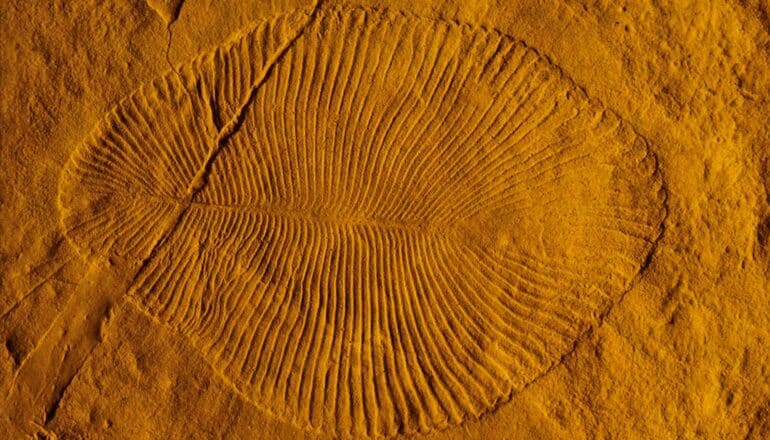
Evidence suggests a weak magnetic field millions of years ago may have fueled the proliferation of life on Earth.
The Ediacaran Period, spanning from about 635 to 541 million years ago, was a pivotal time in Earth’s history. It marked a transformative era during which complex, multicellular organisms emerged, setting the stage for the explosion of life.
But how did this surge of life unfold and what factors on Earth may have contributed to it?
Researchers have uncovered compelling evidence that Earth’s magnetic field was in a highly unusual state when the macroscopic animals of the Ediacaran Period diversified and thrived. Their study raises the question of whether these fluctuations in Earth’s ancient magnetic field led to shifts in oxygen levels that may have been crucial to the proliferation of life forms millions of years ago.
The study appears in Nature Communications Earth & Environment.
According to John Tarduno, professor in the earth and environmental sciences department at the University of Rochester, one of the most remarkable life forms during the Ediacaran Period was the Ediacaran fauna. They were notable for their resemblance to early animals—some even reached more than a meter (three feet) in size and were mobile, indicating they probably needed more oxygen compared to earlier life forms.
“Previous ideas for the appearance of the spectacular Ediacaran fauna have included genetic or ecologic driving factors, but the close timing with the ultra-low geomagnetic field motivated us to revisit environmental issues, and, in particular, atmospheric and ocean oxygenation,” Tarduno says.
Magnetic mysteries
About 1,800 miles below us, liquid iron churns in Earth’s outer core, creating the planet’s protective magnetic field. Though invisible, the magnetic field is essential for life on Earth because it shields the planet from solar wind—streams of radiation from the sun. But Earth’s magnetic field wasn’t always as strong as it is today.
Researchers have proposed that an unusually low magnetic field might have contributed to the rise of animal life. However, it has been challenging to examine the link because of limited data about the strength of the magnetic field during this time.
Tarduno and his team used innovative strategies and techniques to examine the strength of the magnetic field by studying magnetism locked in ancient feldspar and pyroxene crystals from the rock anorthosite. The crystals contain magnetic particles that preserve magnetization from the time the minerals were formed. By dating the rocks, researchers can construct a timeline of the development of Earth’s magnetic field.
Leveraging cutting-edge tools, including a CO2 laser and the lab’s superconducting quantum interference device (SQUID) magnetometer, the team analyzed with precision the crystals and the magnetism locked within.
Earth’s core and evolution
Their data indicates that Earth’s magnetic field at times during the Ediacaran Period was the weakest field known to date—up to 30 times weaker than the magnetic field today—and that the ultra-low field strength lasted for at least 26 million years.
A weak magnetic field makes it easier for charged particles from the sun to strip away lightweight atoms such as hydrogen from the atmosphere, causing them to escape into space. If hydrogen loss is significant, more oxygen may remain in the atmosphere instead of reacting with hydrogen to form water vapor. These reactions can lead to a buildup of oxygen over time.
The new research suggests that during the Ediacaran Period, the ultraweak magnetic field caused a loss of hydrogen over at least tens of millions of years. This loss may have led to increased oxygenation of the atmosphere and surface ocean, enabling more advanced life forms to emerge.
Tarduno and his research team previously discovered that the geomagnetic field recovered in strength during the subsequent Cambrian Period, when most animal groups begin to appear in the fossil record, and the protective magnetic field was reestablished, allowing life to thrive.
“If the extraordinarily weak field had remained after the Ediacaran, Earth might look very different from the water-rich planet it is today: water loss might have gradually dried Earth,” says Tarduno.
The work suggests that understanding planetary interiors is crucial in contemplating the potential of life beyond Earth.
“It’s fascinating to think that processes in Earth’s core could be linked ultimately to evolution,” Tarduno says. “As we think about the possibility of life elsewhere, we also need to consider how the interiors of planets form and develop.”
The National Science Foundation supported the work.
Source: University of Rochester
The post Did a weak magnetic field lead to life on Earth? appeared first on Futurity.
from Futurity https://ift.tt/NmZVEle
No comments:
Post a Comment